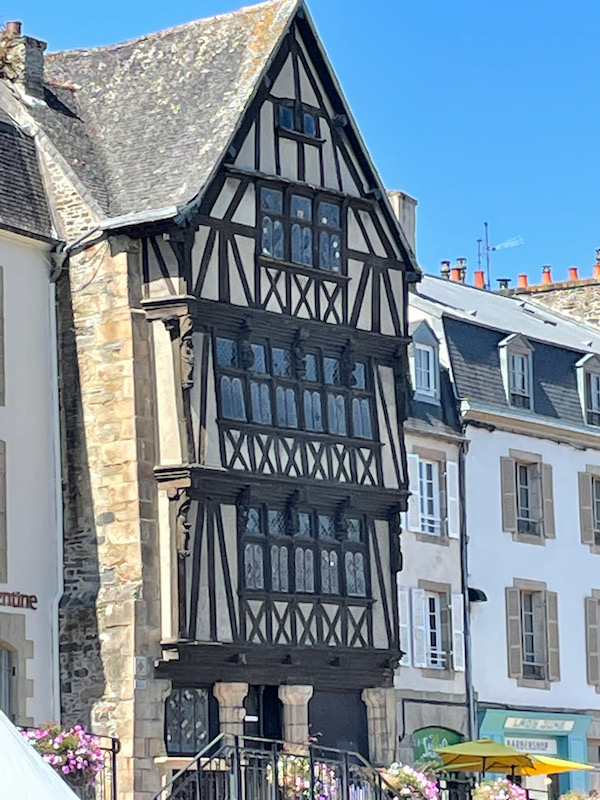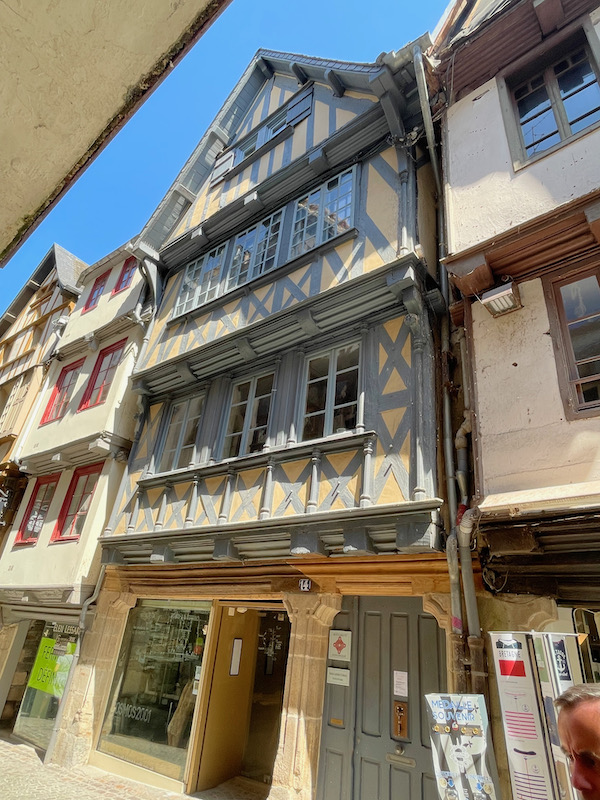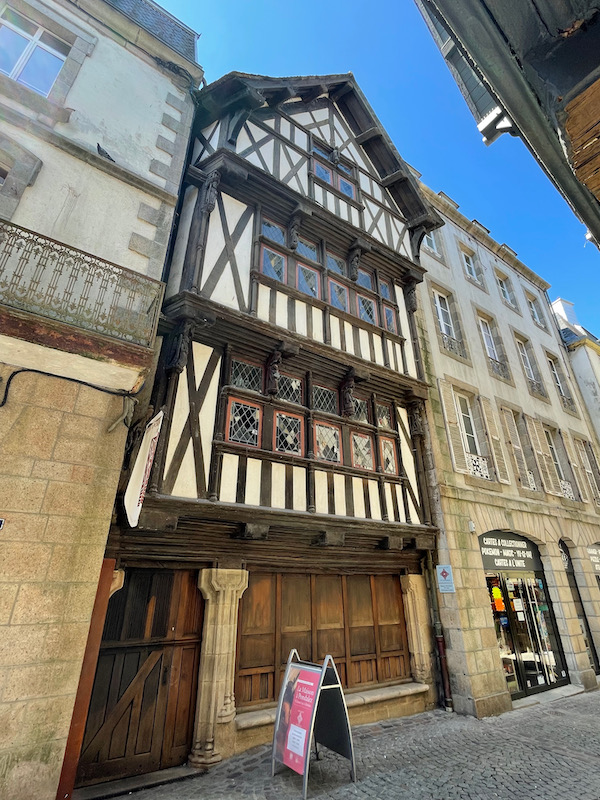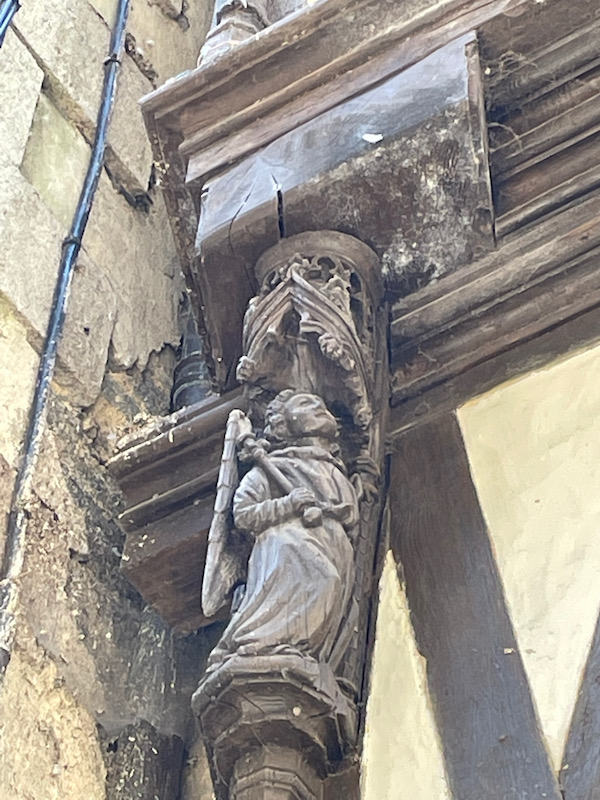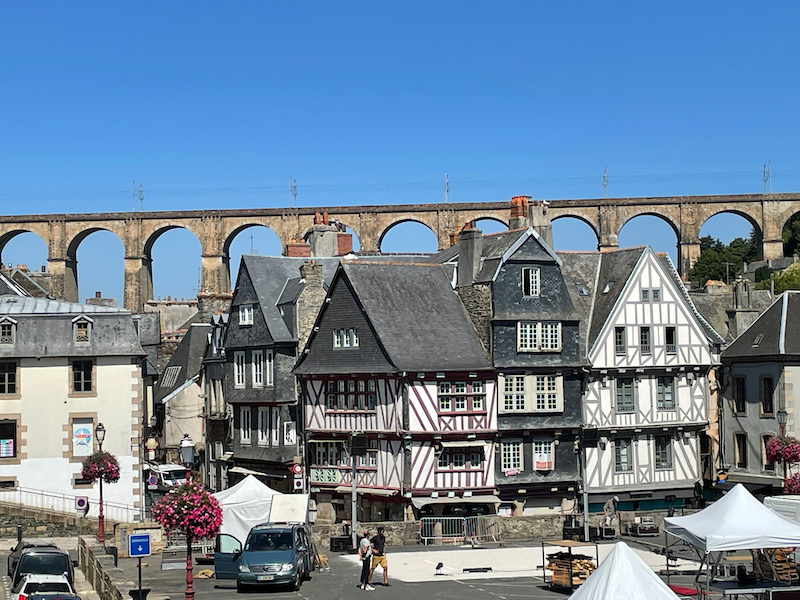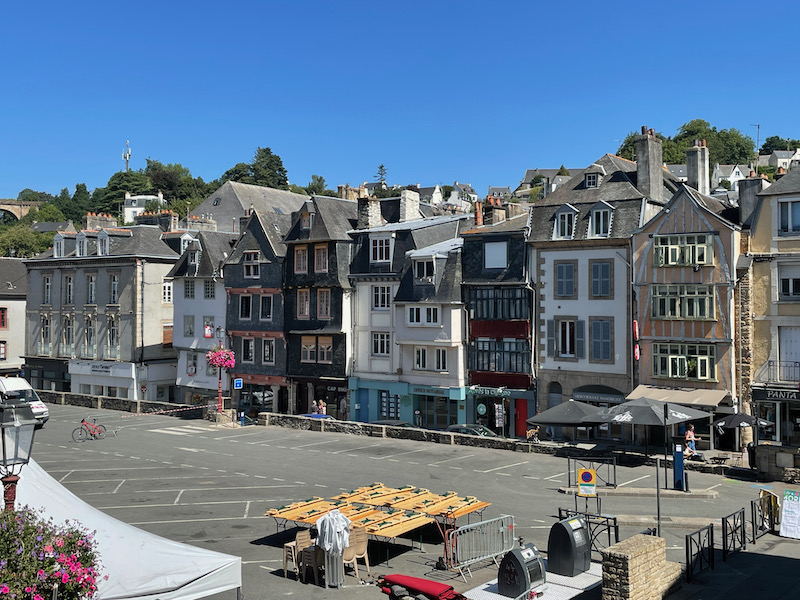Our Blog - Morlaix, France
It is fairly large compared to many of the places we visited ... with almost 15,000 people. Unfortunately, the population has been going down since the 1970's. While it isn't right on the English Channel, it is still a port-town, sitting in an estuary enclosed by the foothills of the Monts d’Arrée mountains. Morlaix was originally a Gallic oppidum, later transformed into a roman Castrum.
By the 12th century, it was a simple fishing town, becoming part of the Brittany Duchy in 1187. The Grand Rue still shows traces of the rich medieval town that continued to prosper well beyond Renaissance times. Starting in the 15th century, the merchants who thrived here were linen traders specializing in fine linen, a local speciality. The timbered houses built by these merchants had a smaller ground floor surface area that grew with each added floor, creating architectural overhangs that kept lower timbers and merchandise dry whilst avoiding excessive taxes (then based on the ground floor area of a house).
The city is particularly known for its viaduct built in the 19th century, that you can see here behind the street in the historic city center, which earned the city the nickname "City of the Viaduct". Here you can start seeing some of the old linen-merchant houses ... notice how each floor sticks out a little bit more over the street. A few also have an interesting feature in that the front of the houses look to be covered in roof tiles other than on the ground floor. In many cases, there are still nicely carved wooden statues on the façade.
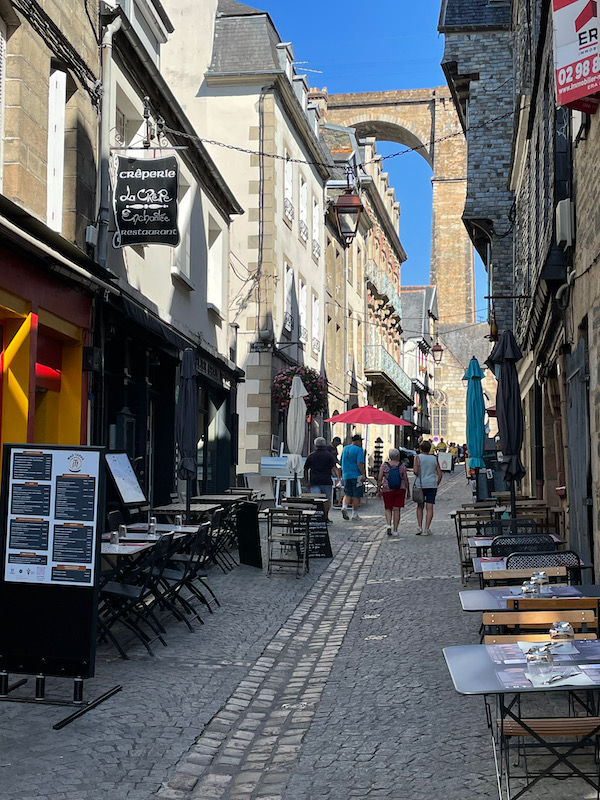
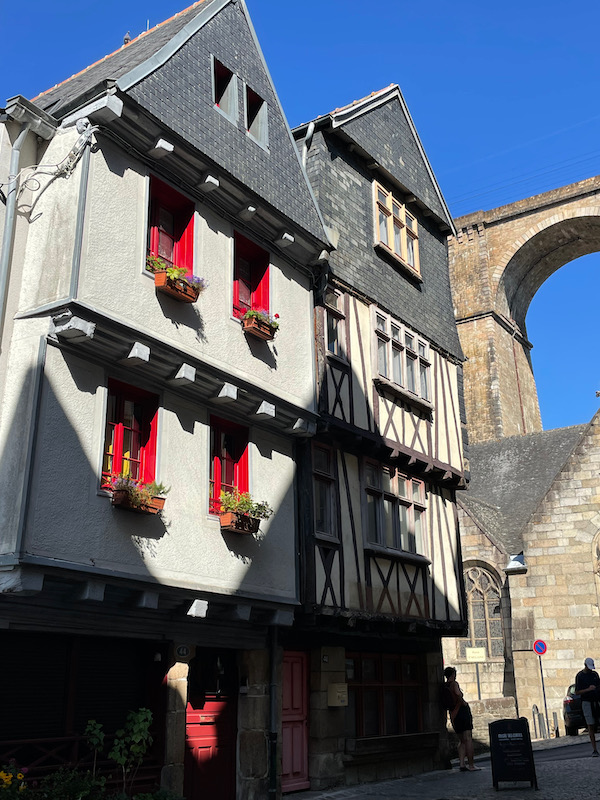
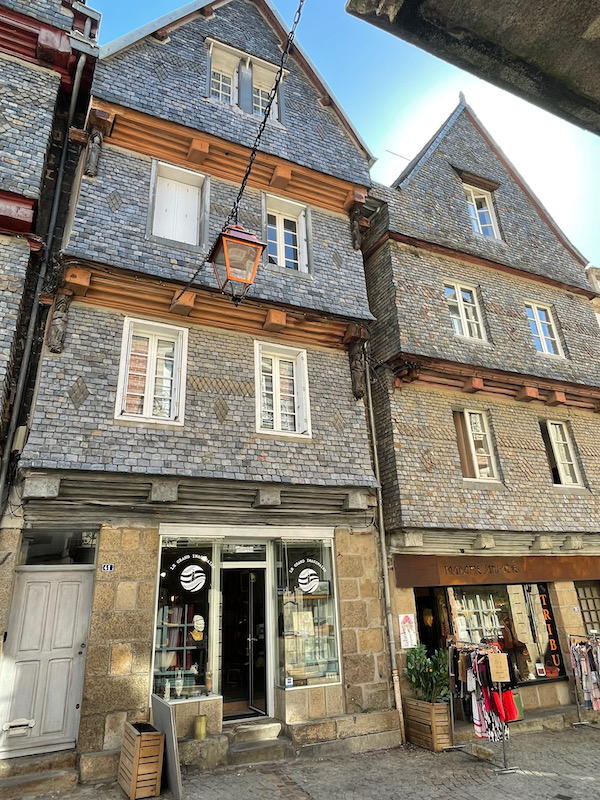
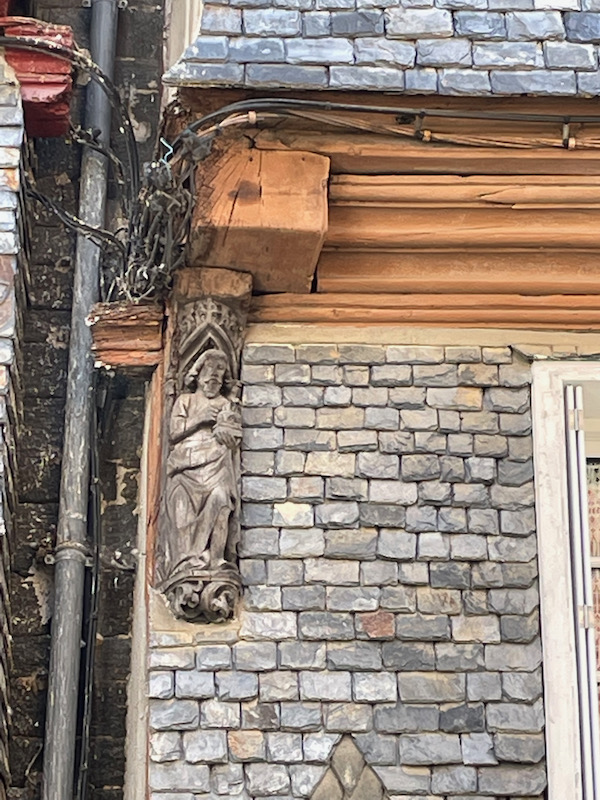
The Church of Saint-Mélaine was constructed at the end of the 15th century in flamboyant Gothic style and is dedicated to Melaine de Rennes.
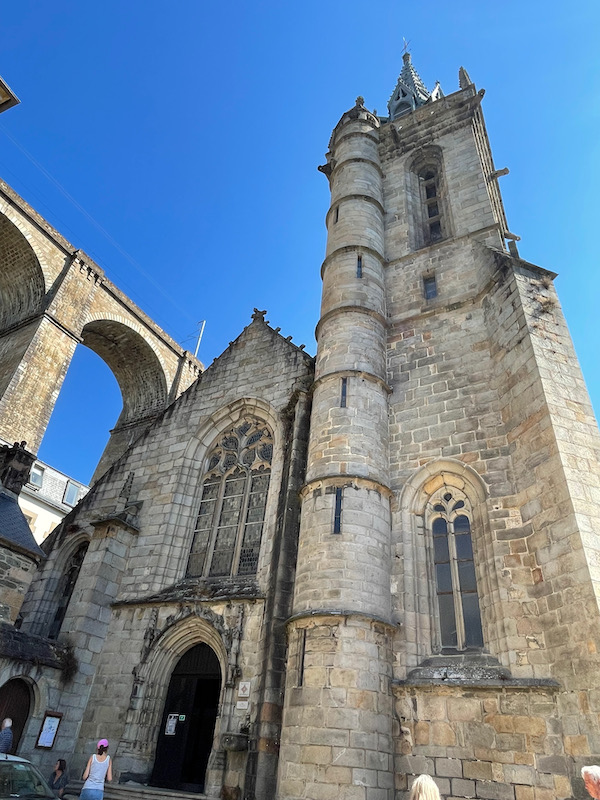
Inside, the church nave and 2 side aisles are covered by wooden vaults that are painted a dark blue. You can see the familiar cross-beams and the crocodiles on either end. At the southern portal, a font is established on the mullion separating the two doors. The church houses a 17th century organ , a polychrome wooden altarpiece from the 15th century, an oil on canvas painting of the Holy Family from 1617, statues of St Tugdual in polychrome wood from the 15th century , Saint Yves, Saint Marguerite and, a sculpted group of Saint Anne and the Virgin from the 16th century, Saint Pierre and Saint Mélaine from the 17th century.
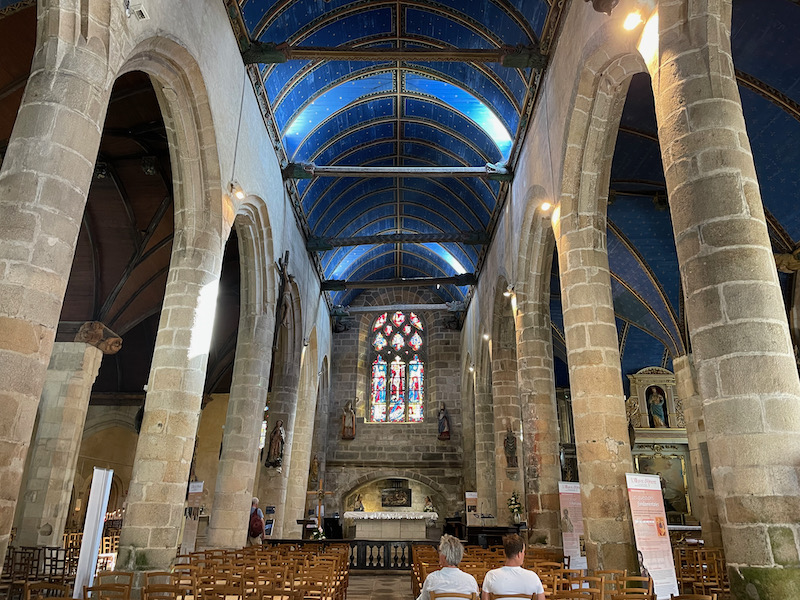
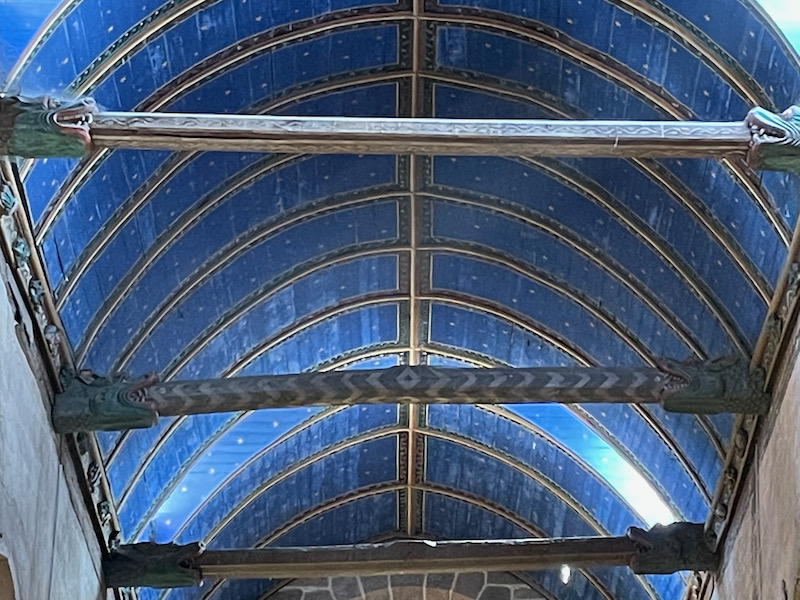
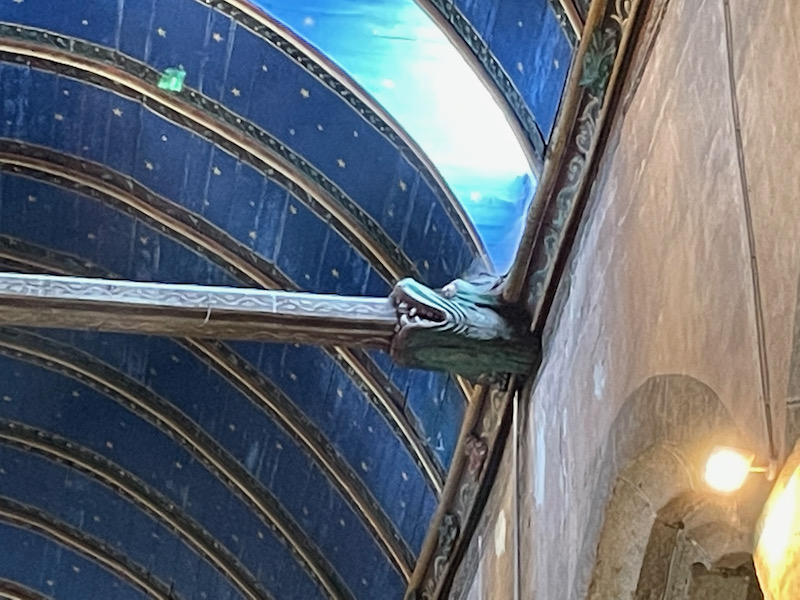
This side aisle altar has a painting by François Valentin dating from the 18th century entitled "The Child Jesus".
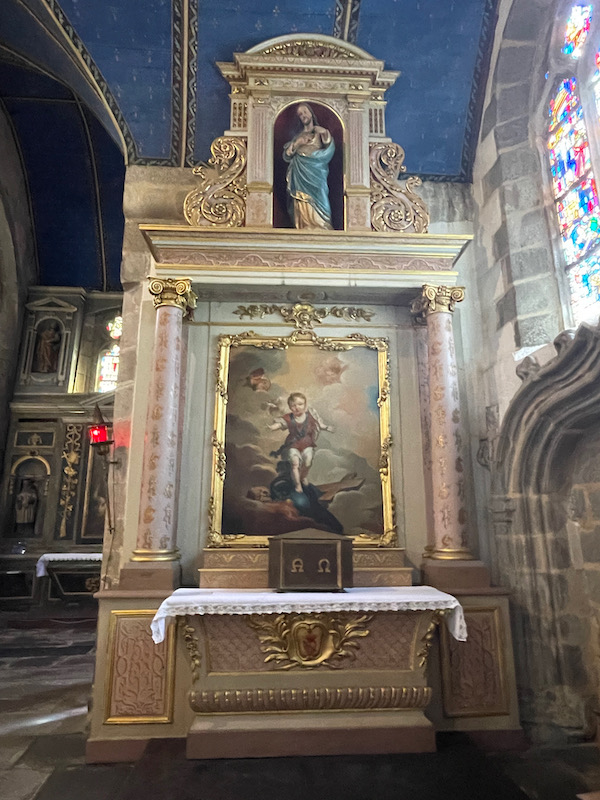
It has quite. few very old statues, including this one of Saint Anne, dating from the 16th century.
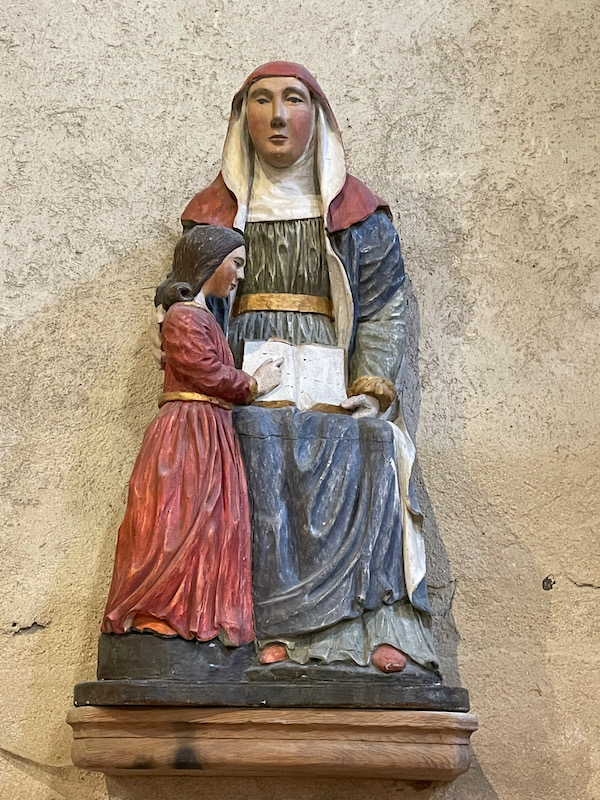
This sculpture from the 16th century shows the flight into Egypt. Joseph, Mary, and Jesus on the back of a donkey fleeing the solders of King Harrod.
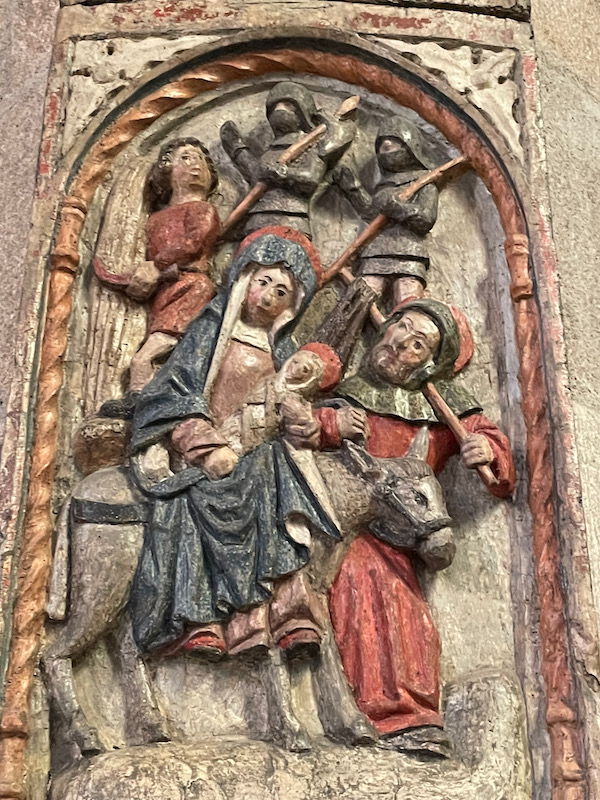
I can't tell you much about the stained glass windows, but they look pretty modern to me.
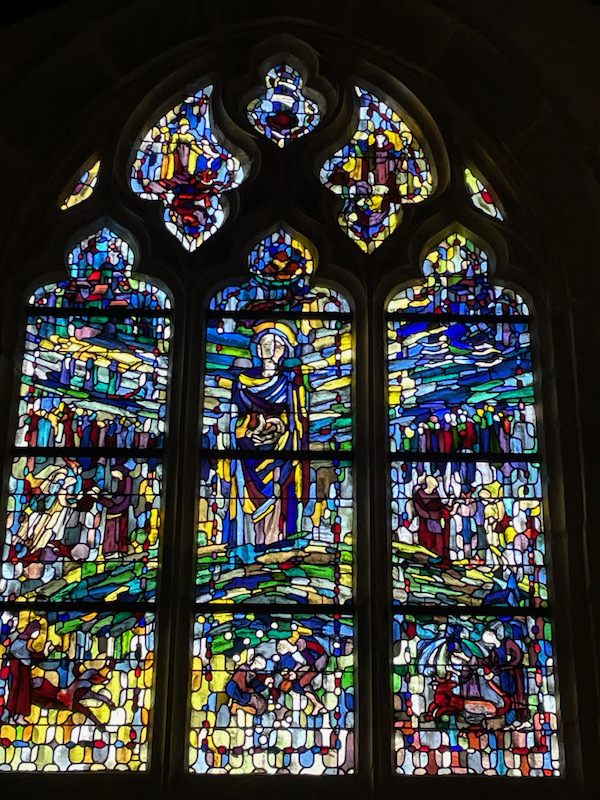
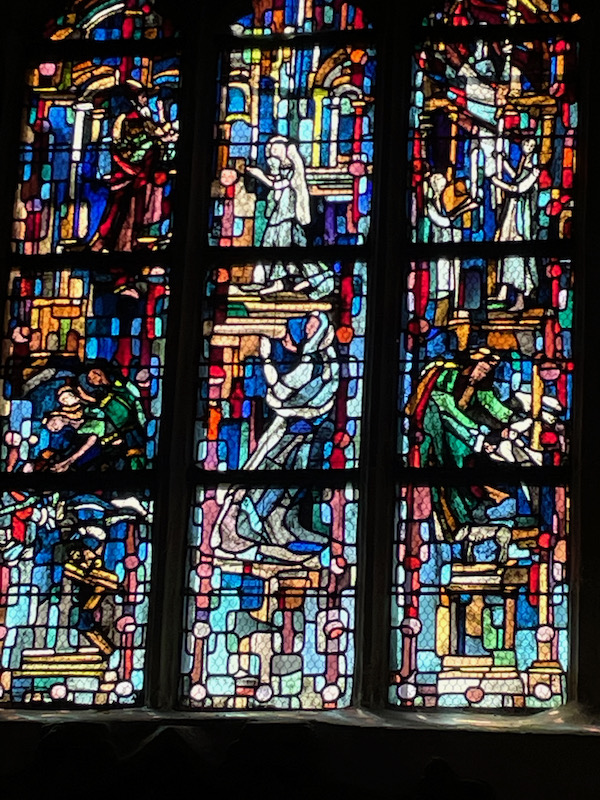
The Baptistery font has a carved oak Renaissance baldaquin from 1660. Around the top are statues of a set of Saints, including John, Mark, Matthew, Paul, and Saint Mélaine.
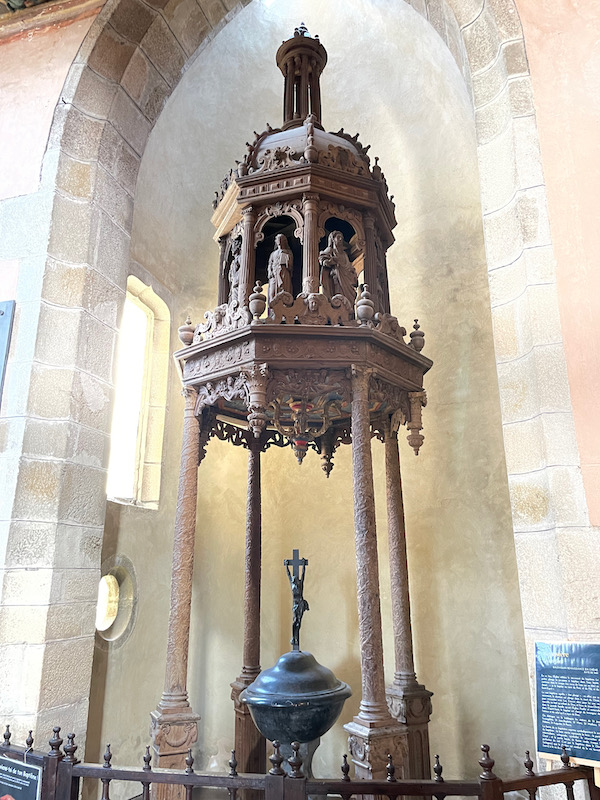
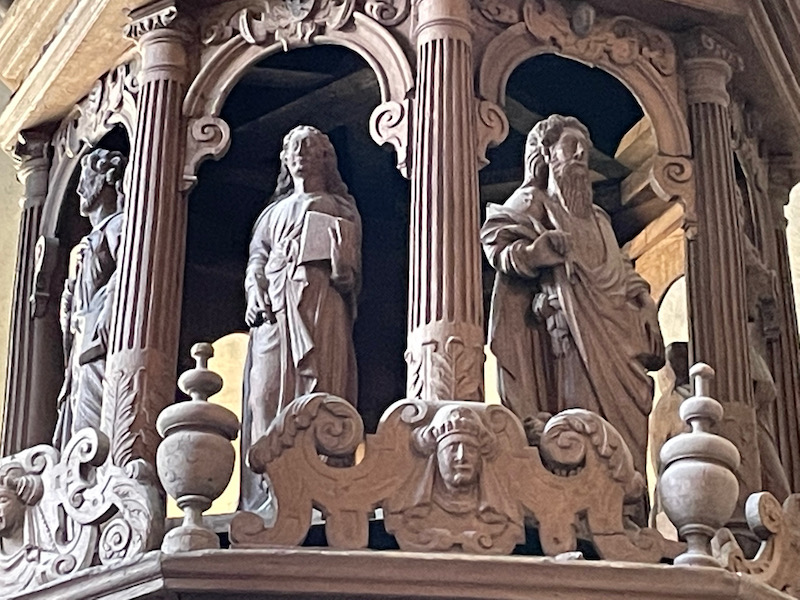
I almost missed this side porch, which was for me the most impressive part of the church. There are paintings over the doors, but then when you look up, you see a set of Saints again, this time in medallions on a sky-blue background. Saints Paul, Peter, and John are shown in medallions of their own, but on a brown background.
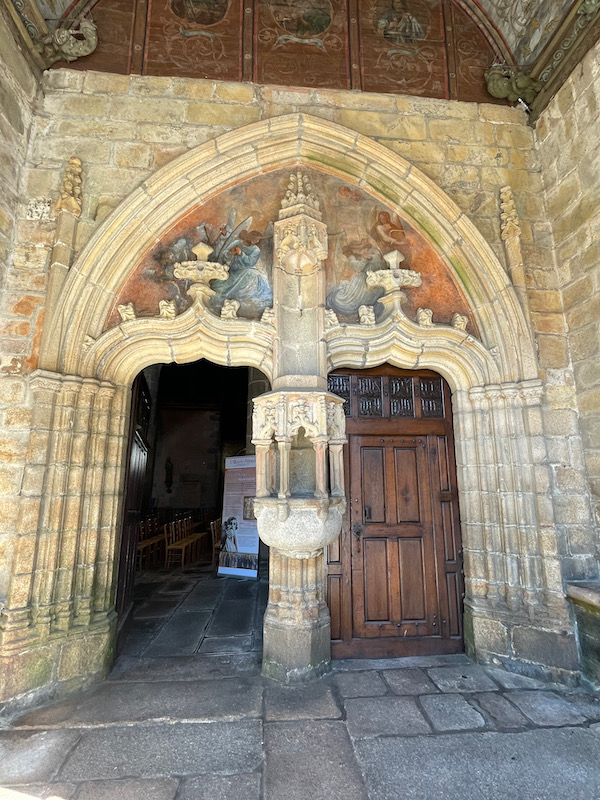
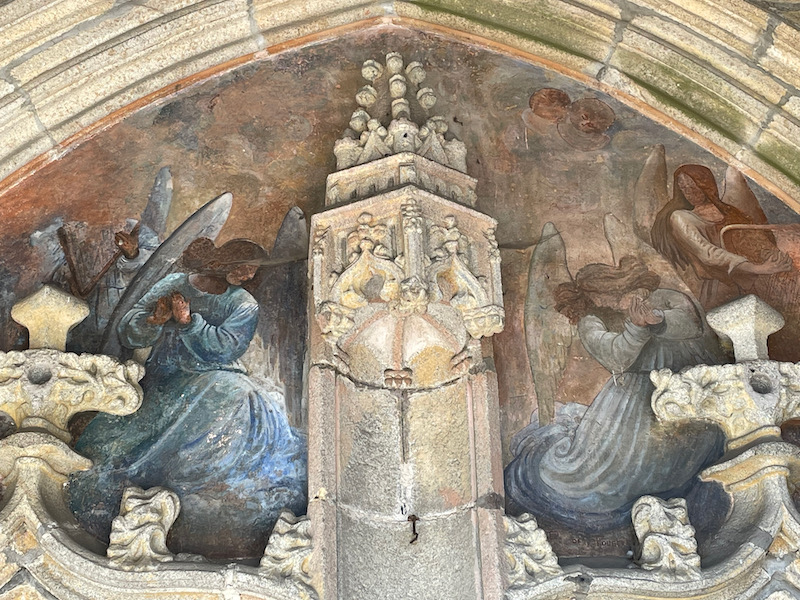
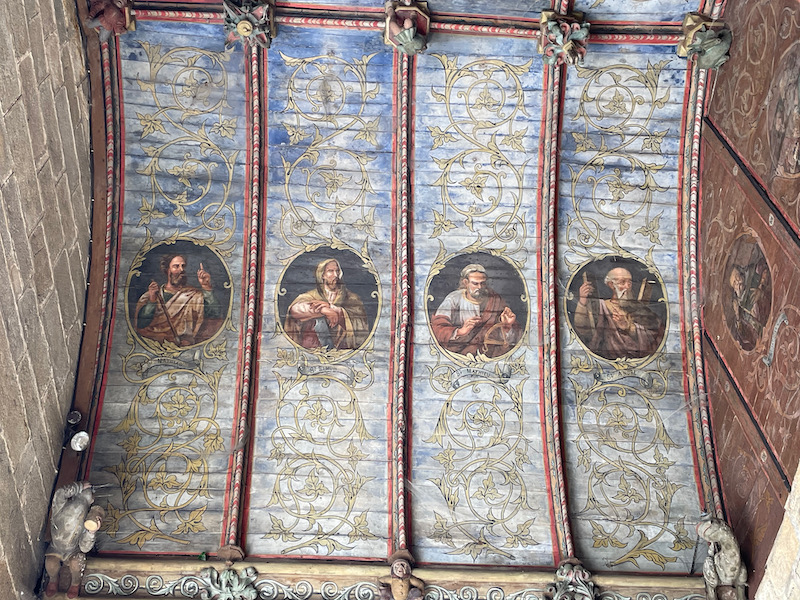

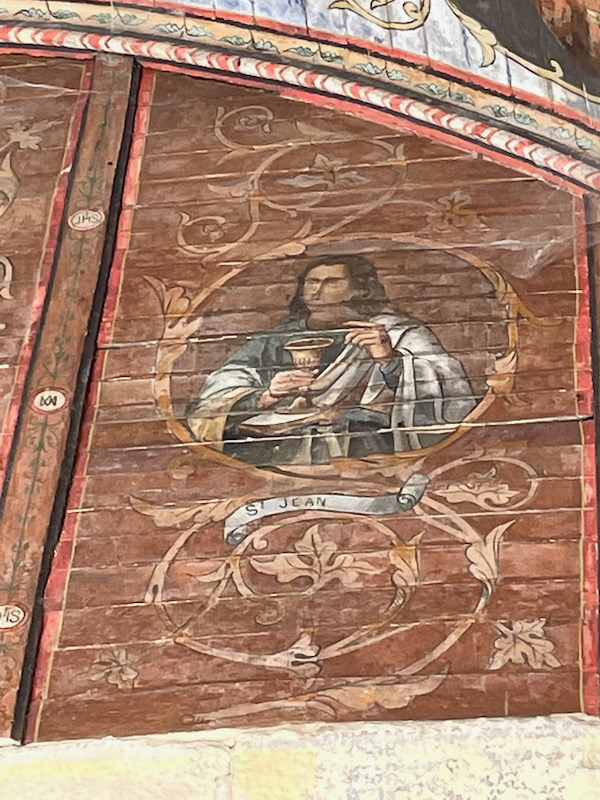
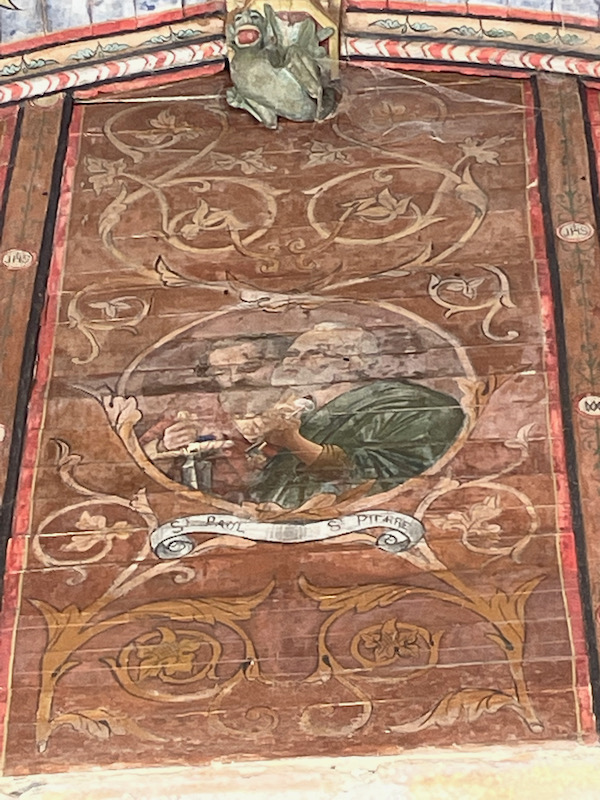
Right next to the church is the Hôtel de François du Parc, which was built in the 16th and 17th centuries from granite schist. It is a large square pavilion flanked by a round turret. The main building has a semicircular door framed by two fluted columns with capitals, surmounted by a triangular pediment. The square pavilion is flanked by the damped granite domed turret.
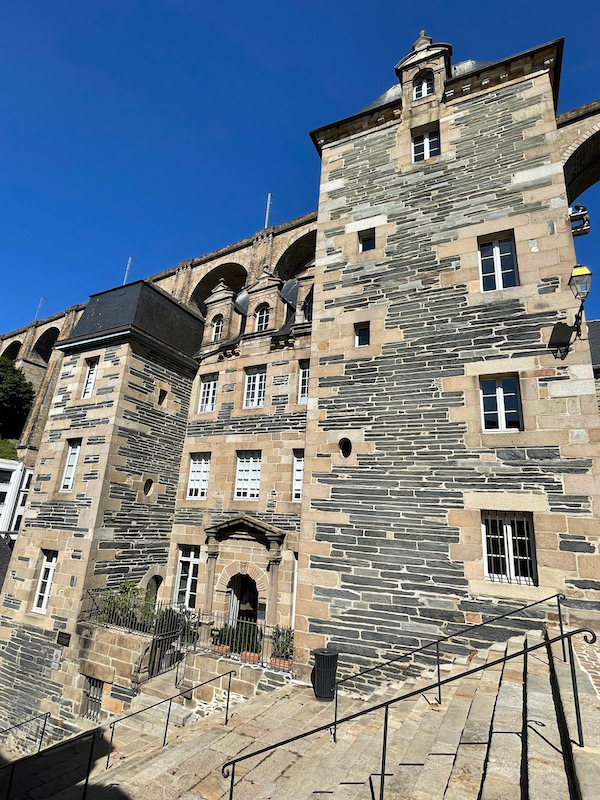
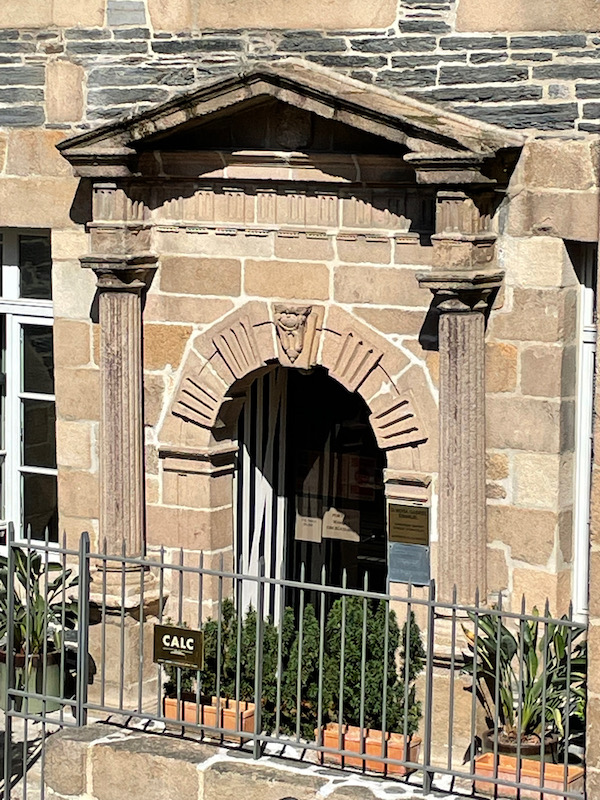
Place Allende is where the old market halls used to be. In 1860, a set of buildings were demolished to build a Baltard-type market hall, which was then demolished in 1971. In addition to the House of Duchess Anne (which I can't find any proof that Duchess Anne lived or stayed there), there are other "lantern" or "pondalez" houses on the square and a couple of the streets leaving the square. These date from the 15th and 16th centuries. And I'll finish with a view of a set of historical half-timbered houses on one side of the square, with the viaduct in the background.
